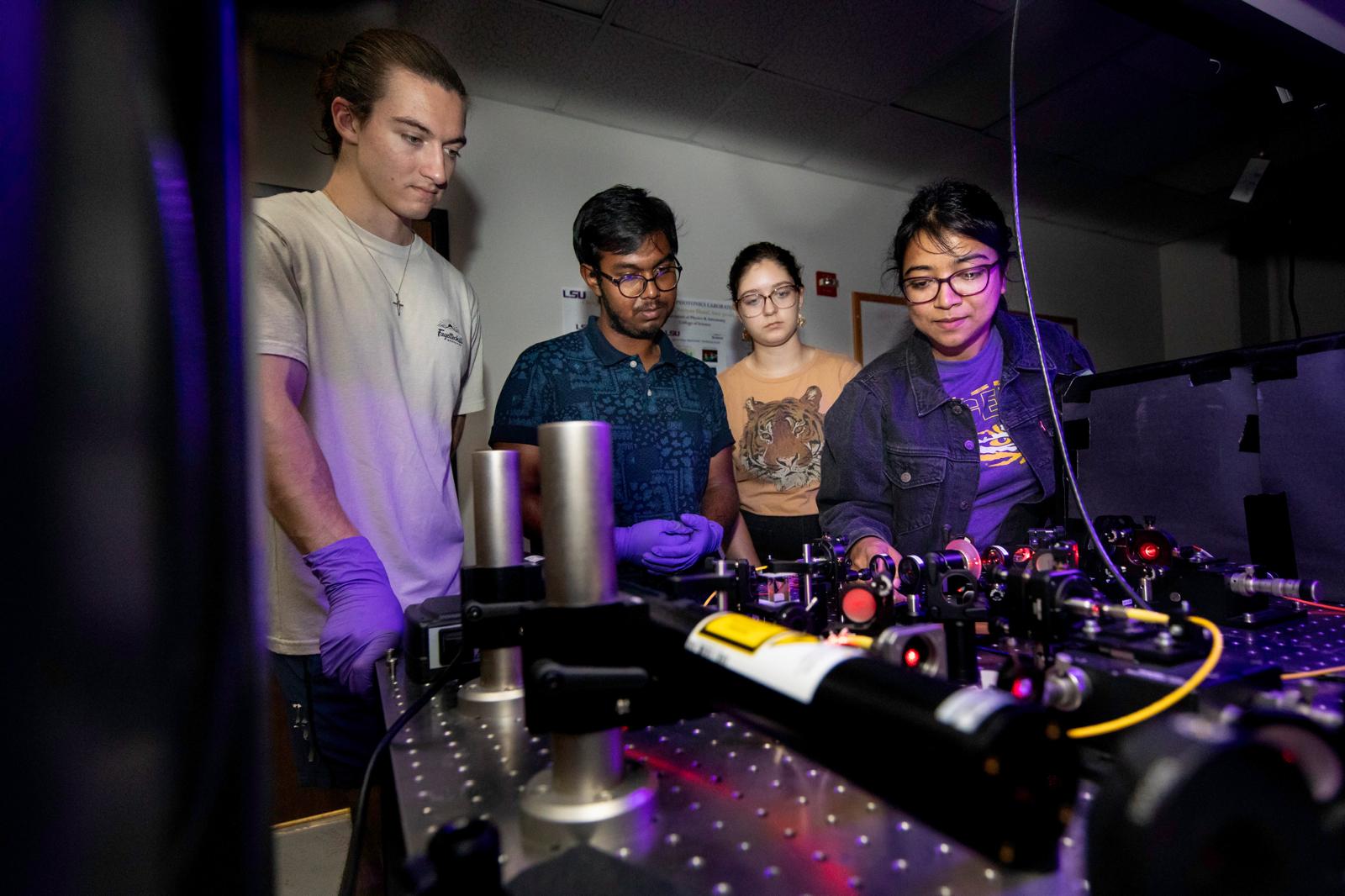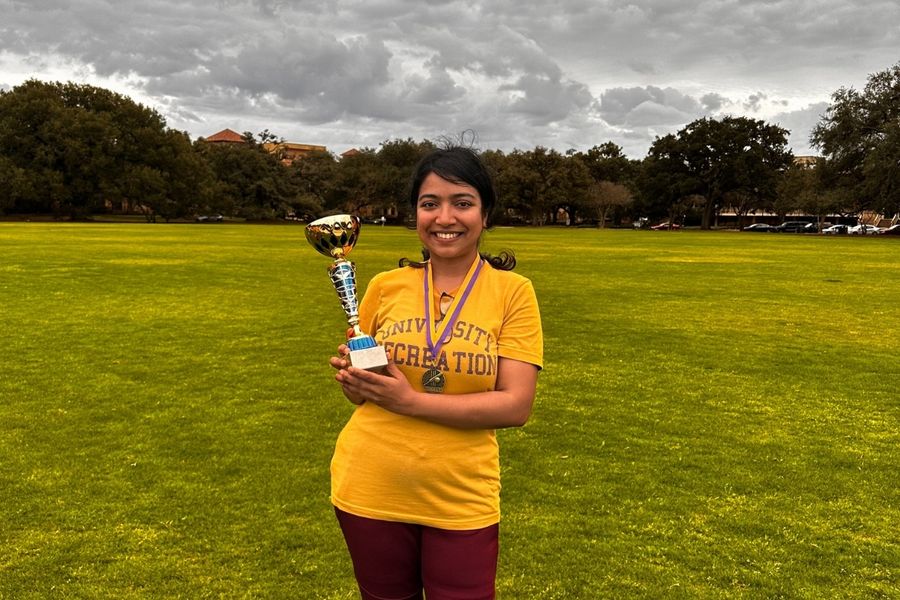Her Voice in Science: LSU Quantum Physics PhD Student Inspiring the Next Generation of Women in Science
February 11, 2025

Jannatul is mentoring undergraduate students in LSU's Quantum Optics Lab.
We recently spoke with Jannatul Ferdous, a fourth-year PhD student in the Department of Physics, about her journey in science, her innovative research, and her vision for the future.
Here’s a Q&A session with Jannatul, where she shares her insights and experiences in the world of science:
- What inspired you to pursue a career in science?
Science, for me, is the key to logically explaining everything we see and experience, and it’s what shapes the future. As a woman in science specializing in quantum optics, I’m driven by the chance to push the boundaries of what’s possible and make a real difference.
Growing up in Bangladesh, where science isn’t often the first choice for a woman’s career, I always felt drawn to something bigger. I’ve always wondered why the universe is the way it is and what lies beyond what we can see. This curiosity sparked my love for physics—a field that allows me to ask the biggest questions and search for answers, where I can explore the fundamental laws of nature. Despite the challenges, I’ve remained dedicated to this path.
- Tell us about your research.
My research is centered on quantum optics and plasmonic metamaterials, focusing on developing cutting-edge technologies for solar energy, quantum information processing, and telecommunications. A major part of my work involves controlling light at the nanoscale, particularly in plasmonic structures, to enhance solar cell efficiency. I am also exploring quantum photonic technologies that leverage natural light, with promising applications in imaging, quantum metrology, and cryptography.
In my recent project, I used plasmonic metamaterials to manipulate the phase and direction of light for quantum sensing, successfully detecting different gases through this technique. A similar approach can be applied to solar cells to minimize random light localization, directing light more efficiently toward the electronics— a significant challenge in improving solar cell performance. - What was a turning point or defining moment in your work as a quantum science student?
A defining moment in my journey was when I first succeeded in controlling plasmonic modes in my experiment. After months of troubleshooting, I finally observed the expected interference patterns—proof that my approach was working. Another pivotal moment was presenting my research and seeing people engaged, asking questions, and recognizing its potential impact. These experiences reinforced my belief in my work and pushed me to move forward with even more determination.
- Who is your science role model?
My science role model is Marie Curie. Her groundbreaking work in radioactivity and determination in a male-dominated field have always inspired me. She faced numerous challenges but still made incredible contributions to science. She’s a reminder that with passion and dedication, you can overcome anything and make a real impact.
"Science needs more women, and the best way forward is to believe in ourselves and encourage others to do the same."
A typical day for Jannatul involves a balance of research, experiments, and personal interests. She starts by planning her tasks, whether it’s running nanophotonic simulations, setting up optical experiments, or troubleshooting lab issues.

As a part of the winning team in the annual Cricket Tournament organized by BSA at LSU.
Beyond research, she prioritizes activities that help her maintain balance. “I go to the gym regularly and enjoy painting, craftwork, and occasionally reciting poetry." She added, "Gardening is another hobby I enjoy, as it helps me relax and unwind." She also loves traveling, hiking, and playing badminton and cricket. These hobbies provide a creative and physical outlet, helping her stay focused and recharged for her academic pursuits. Jannatul wants to keep exploring quantum optics and plasmonic technologies. Her main goal is to make solar cells more efficient for better renewable energy. She also aims to improve quantum information processing and telecommunications. She is especially excited about finding new ways to use natural light to create innovative technologies.
When asked about their role in shaping the future of science and technology, she shared her thoughts:
- How do you think women are shaping the future of science and technology?
Women are making significant contributions to shaping the future of science and technology by bringing fresh perspectives, innovative ideas, and diverse approaches to research and development. As more women pursue careers in these fields, they’re breaking barriers and inspiring future generations to think critically and challenge traditional boundaries. Their resilience and passion help them excel in areas like quantum science, biotechnology, and engineering. However, they also face unique challenges, especially during pregnancy, and need better support in a male-dominated world. With the right support, women can continue proving their scientific abilities and driving progress. - What advice would you give to female students interested in pursuing a STEM career?
My advice would be simple: never let anyone tell you that you can’t do science just because you’re a woman. Believe in your own strength, your dreams, and your ability to think critically. If you feel you can do it, you absolutely can.
Jannatul hopes to continue mentoring and inspiring the next generation of scientists, particularly young women, to pursue their passions in physics. She says, "Science needs more women, and the best way forward is to believe in ourselves and encourage others to do the same."